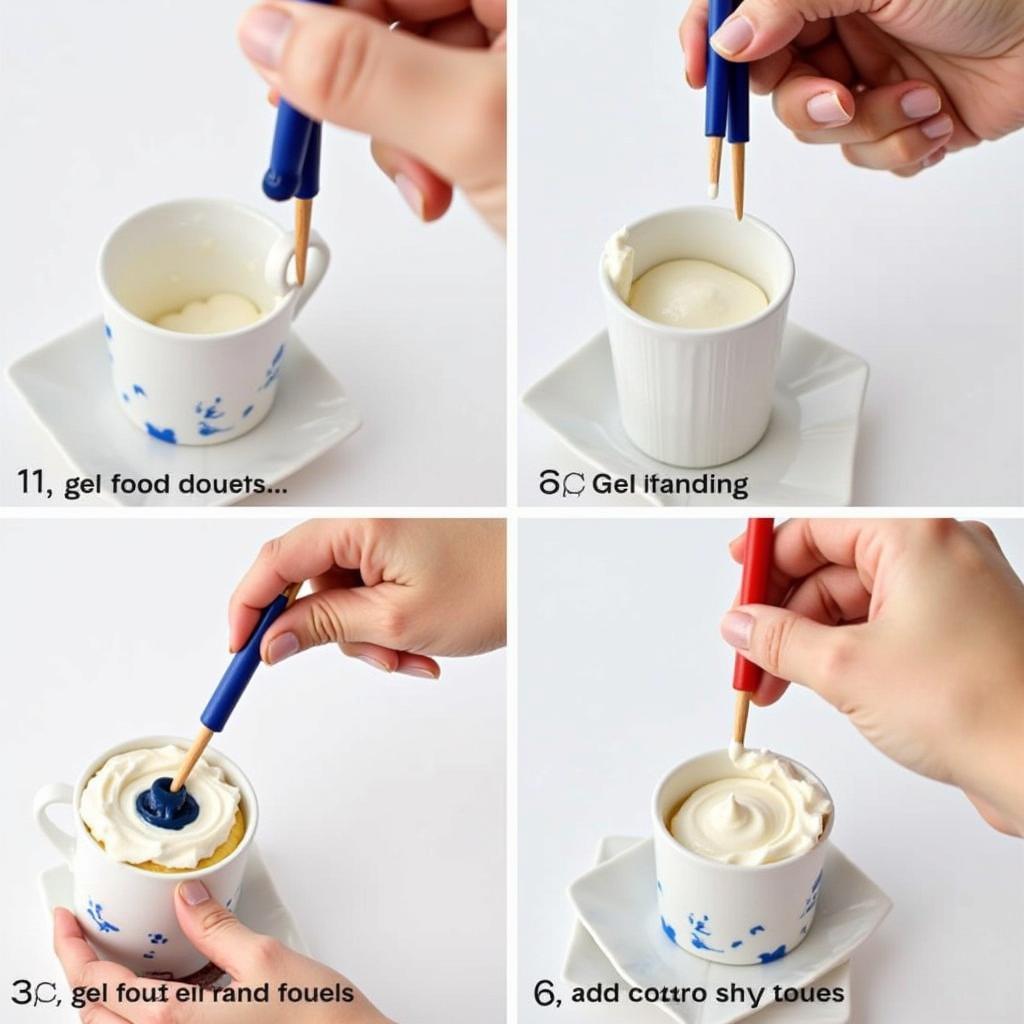Gel food coloring has become a popular alternative to liquid food coloring, offering vibrant hues and concentrated color with minimal impact on the consistency of your creations. But how much gel food coloring should you use to achieve the desired color intensity when switching from liquid? This article dives deep into the world of gel food coloring, providing you with the knowledge you need to confidently transition from liquid and unlock a spectrum of vibrant possibilities in your baking and decorating.
Understanding the Difference Between Gel and Liquid Food Coloring
Before we delve into the conversion ratios, it’s essential to understand the key differences between gel and liquid food coloring. Liquid food coloring is water-based and often requires larger quantities to achieve deep colors, which can thin out batters and frostings. Gel food coloring, on the other hand, is highly concentrated and comes in a gel or paste form. This means a little goes a long way, delivering vibrant colors without altering the texture of your creations. This is particularly helpful when working with candy melts, as adding liquid can cause seizing. For more information on using gel food coloring with candy melts, check out can i use gel food coloring in candy melts.
 Gel vs. Liquid Food Coloring Comparison
Gel vs. Liquid Food Coloring Comparison
How to Convert Liquid Food Coloring Measurements to Gel
The general rule of thumb when substituting gel for liquid food coloring is to start with a toothpick’s tip amount of gel for every few drops of liquid called for in the recipe. This allows you to gradually build the color intensity, avoiding over-coloring.
A Step-by-Step Guide to Using Gel Food Coloring
- Start Small: Begin with a tiny amount of gel food coloring—about the size of a grain of rice.
- Mix Thoroughly: Incorporate the gel thoroughly into your batter, frosting, or other medium.
- Assess the Color: Observe the color after mixing. Remember that the color may deepen slightly over time.
- Add More If Needed: If the color isn’t vibrant enough, add another small amount of gel and mix again. Repeat this process until the desired color is achieved.
Tips for Successful Color Conversion
- Toothpick Test: Use a toothpick to dip into the gel and then swirl it into your mixture. This minimizes waste and allows for precise color control.
- White Base: For the most vibrant colors, start with a white base, especially when working with frosting or icing.
- Gel Color Chart: Keep a gel food coloring chart handy to track the colors you’ve created and their corresponding gel amounts. This will save you time and effort in the future. If you’re aiming for specific colors, knowing how to mix them can be helpful. You can learn how to make burnt orange food coloring and how to make pink food coloring with red on our website.
 Using a toothpick for precise gel food coloring application
Using a toothpick for precise gel food coloring application
Common Questions About Using Gel Food Coloring
How do I prevent streaks in my frosting? Streaks can occur if the gel isn’t fully incorporated. Ensure thorough mixing, starting with a small amount of gel and gradually adding more until the desired color is achieved.
Can I use gel food coloring in any recipe? Gel food coloring is versatile and can be used in most recipes, including batters, frostings, icings, and even doughs. However, it may not be suitable for certain clear liquids or candies.
How do I store gel food coloring? Store gel food coloring in a cool, dark place, away from direct sunlight and heat. Make sure the lids are tightly closed to prevent drying out.
What if I add too much gel food coloring? If you accidentally add too much gel, you can try to lighten the color by adding more of the uncolored base. However, it’s always best to start with small amounts to avoid over-coloring.
“When working with delicate desserts, the precision of gel food coloring is invaluable,” says renowned pastry chef, Amelia Dubois. “Its concentrated pigment allows for vibrant colors without compromising the texture, a key factor in achieving the perfect balance of flavor and aesthetics.”
Conclusion
Switching from liquid to gel food coloring can seem daunting at first, but with a little practice and the tips outlined in this article, you’ll be creating vibrant and beautifully colored treats in no time. Remember to start small, mix thoroughly, and be patient. Embrace the power of gel food coloring and unlock a world of colorful culinary creations. For more tips on color mixing, explore how to achieve specific hues like silver, how do you make the color silver with food coloring, or combining primary colors to create purple, how to make purple food coloring with red and blue.
FAQ
-
Is gel food coloring more expensive than liquid? While the initial cost of gel food coloring might be slightly higher, its concentrated nature means it lasts longer, potentially making it more cost-effective in the long run.
-
Can I mix different gel food colors to create new shades? Absolutely! Experimenting with color combinations is a great way to expand your color palette.
-
Does gel food coloring affect the taste of my baked goods? Most high-quality gel food colorings are flavorless and won’t alter the taste of your creations.
-
Can I use gel food coloring in royal icing? Yes, gel food coloring works exceptionally well in royal icing, providing vibrant colors without thinning the consistency.
-
Where can I buy gel food coloring? Gel food coloring is readily available in most baking supply stores, craft stores, and online retailers.
Need more help? Contact us! Phone: 0373298888, Email: SEO.backlink@gmail.com. Visit our showroom at 86 Cau Giay, Hanoi. We offer 24/7 customer support.

